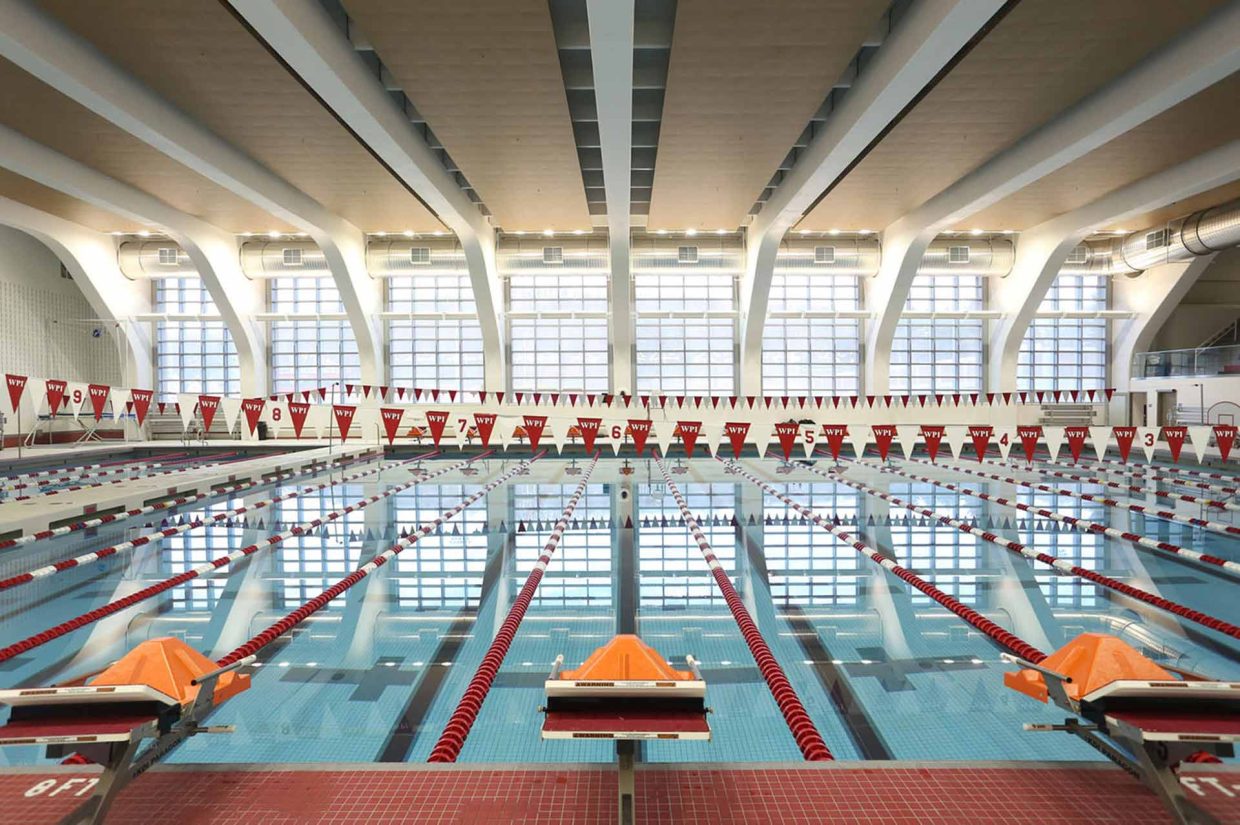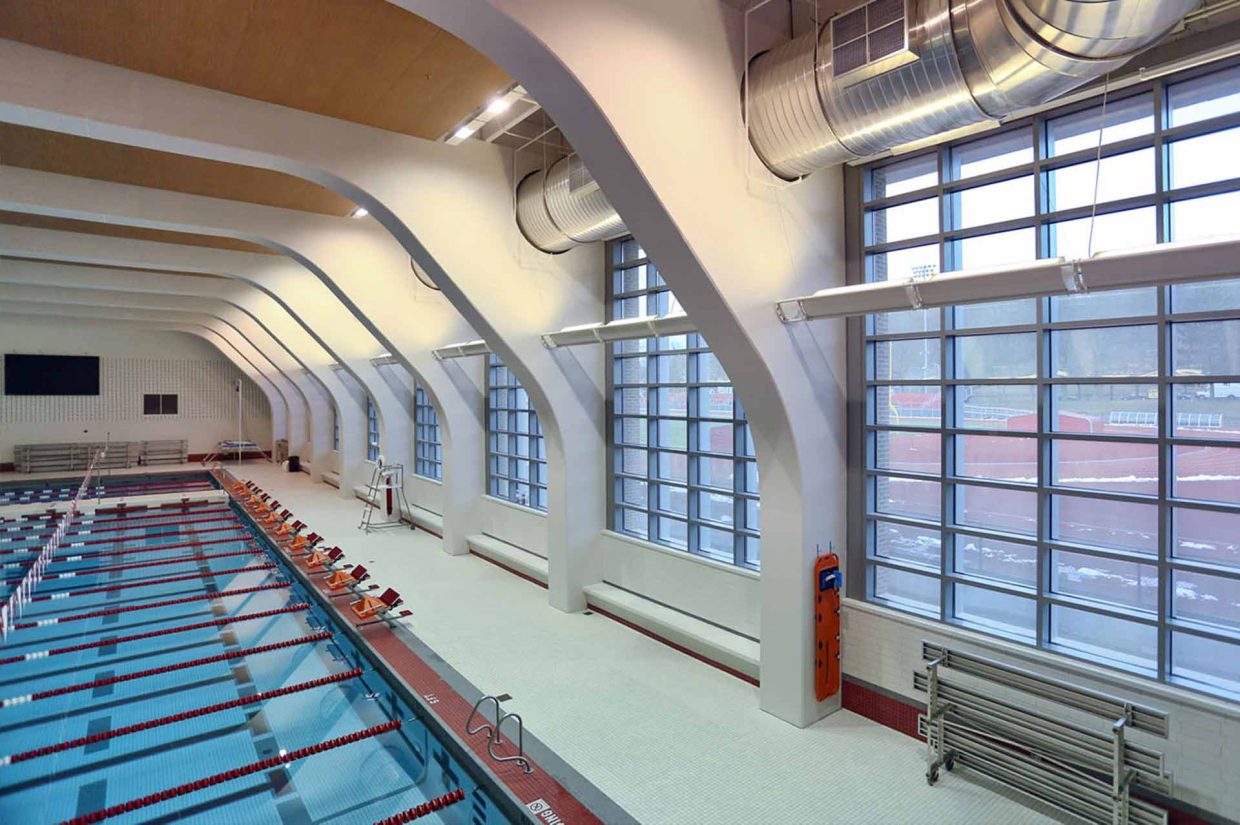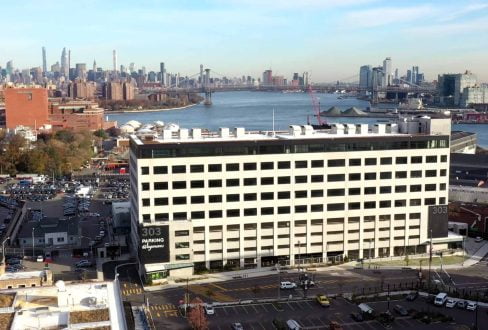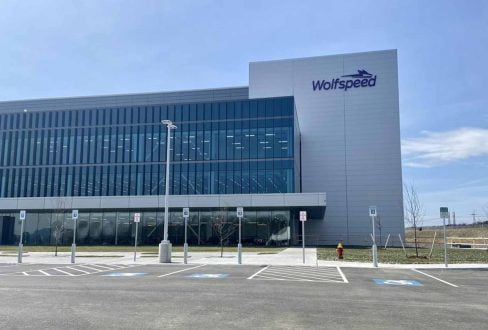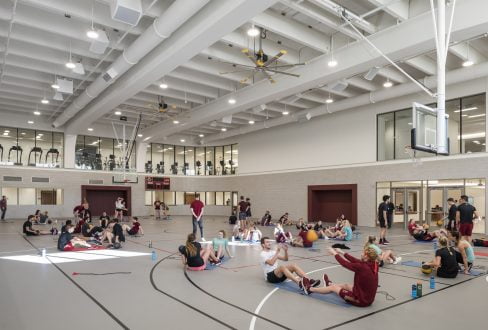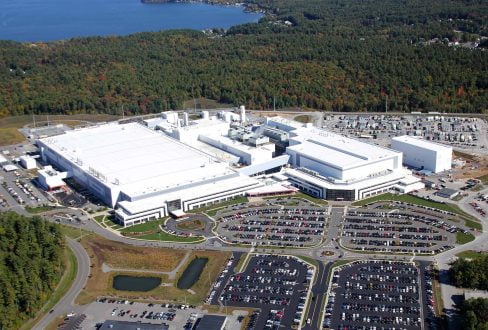Walk into the Worcester Polytechnic Institute (WPI) Sports and Recreation center in Worcester, Mass., and you’ll find swimmers doing laps in a competition-sized pool under soaring precast concrete arches. Head one floor up, and you’ll find another group of students playing basketball on a court supported by those same precast concrete bents.
“Precast concrete is incredibly versatile in that it can be formed to develop a wide range of shapes and customized to the particular design situation,” says Lynne Deninger, Principal for Cannon Design in Boston. “The precast helped our team not only meet the dimensional requirements of the frames over the pool, but also the aesthetic expression for the building.”
From the outset of the project, the design team knew the structure needed to be durable enough to withstand the potentially corrosive pool environment, and be able to accommodate the 110‑ft (34 m) spans across the pool. They initially considered steel trusses, but ultimately realized it wasn’t the most resilient choice.
“We chose precast concrete for its durability, mass and shape flexibility,” Deninger says. “The use of precast concrete to solve this challenge not only made the project stronger but aesthetically unique, and as a polytechnic institution, the interesting engineering approach was of great value to the client.”
The precast concrete bents also satisfied the vibration requirement for supporting the gymnasium. The mass and stiffness of the bents, in combination with the hollow core precast plank elements, provided a floor-framing system with frequency response characteristics that allowed for all activities anticipated in the gym.
“The use of precast concrete proved a differentiator with this project as it allowed for us to support very diverse sports and activities in the same building,” added Colleen McKenna, Associate Principal with Cannon Design. “That kind of flexibility and fusion is necessary in today’s recreation environments and helps WPI best meet the needs of its students.”
Along with delivering a clean open design, the precast concrete is durable enough to withstand the harsh pool environment — other material choices would have degraded over time. “Precast reinforced concrete is typically the best type of structural framing material to respond to this environment,” she says. “Its use here makes the space durable for the future.”
Challenge
From the outset of the project, the design team knew the structure needed to be durable enough to withstand the potentially corrosive pool environment, and be able to accommodate the 110‑ft (34 m) spans across the pool.
“Eventually we chose precast concrete thanks to its durability, mass and shape flexibility,” Deninger says. “The use of precast concrete to solve this challenge not only made the project stronger but aesthetically unique, and as a polytechnic institution, the interesting engineering approach was of great value to the client.”
Solution
Choosing precast concrete bents satisfied the vibration requirement for supporting the gymnasium. The mass and stiffness of the bents, in combination with the hollow core precast plank elements, provided a floor-framing system with frequency response characteristics that allowed for all activities anticipated in the gym.
Instead, the bents were designed as five separate elements spaced at 14 ft‑9 in. (4.5 m) on center spanning 110 ft (34 m) across the pool. The smaller pieces meet requirements for shipping, weight and size, and splice locations were chosen to minimize the demand on the connection and to avoid heavily reinforced areas.
Precast concrete double tees were placed between the bents to support the four-court gymnasium above. A large circular opening for the duct work was also added to maximize the space above the pool and provide a clean profile for the ceiling.

